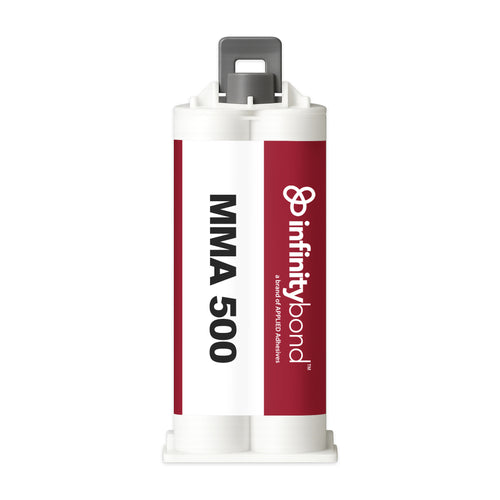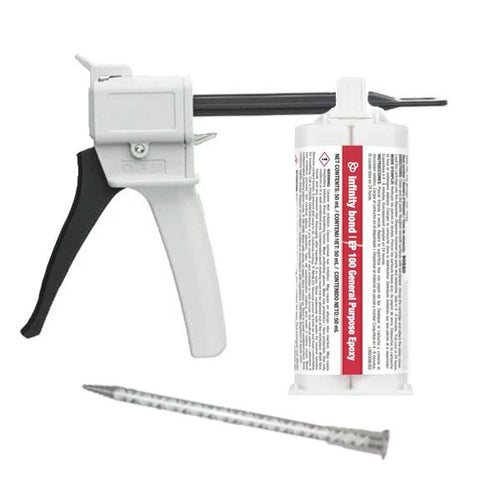Structural Adhesives: The Basics
Structural adhesives are specially formulated to have enhanced load-bearing qualities and offer exceptional strength. It’s stiffer than other kinds of adhesives and is able to bond irregular surfaces and unprimed substrates better than other adhesives. Two of the most common types are epoxy and acrylic. Structural Adhesives are essential in the transportation, automotive, and construction industries. In this comprehensive guide, we share valuable information about the different kinds of structural adhesives and how you can use them most effectively.
Epoxy for Strength
Epoxy adhesives has incredible strength, making it ideal for gap filling or repairs in environmentally harsh conditions. Epoxy is best if your area may be prone to impact, abrasion, and other wear and tear.
One of the most popular and versatile epoxies is the Infinity Bond EP 100 Black 5 Minute Epoxy. This epoxy begins to set in just three to five minutes and yields a rigid, tight bond. It’s easy to mix and easy to apply, making it a favorite for many general needs projects.
For a little more flexibility, we recommend the ASI MP 54750 Versatile & Resistant Epoxy. In addition to this adhesive’s clear color and longer work life, the low viscosity formula makes it easy to apply to a wide variety of substrates. The adhesive’s resistance to external forces such as acids, bases, and organic solvents makes it especially popular for projects at risk of elemental exposure.
Because epoxy works well for gap filling applications, we have to mention the Infinity EP 100NS Non Sag Gap Filling Epoxy. The ultra high viscosity formula and robust impact resistance make this epoxy ideal for gap filling needs in heavily-trafficked areas. Because the adhesive begins to set in quickly, you can finish your repair and get on with it faster.
Acrylics for Flexibility
While epoxy’s claim to fame is strength, acrylic adhesives boast extra versatility when bonding with difficult substrates such as plastics and metals. These characteristics make acrylics ideal for assembly and production needs more so than epoxy.
When using acrylic for prolonged periods of time (especially in tight quarters or along a production line), health conscientious adhesives, such as the 3M DP8805NS Low Odor Structural Acrylic Adhesive, are preferable. The low odor adhesive creates a more comfortable and healthy work environment while still boasting maximum productivity (think over 1,000 psi of shear strength), which is why this is our most popular acrylic adhesive.
For maximum substrate flexibility, the Infinity Bond MMA 310 High-Performance Methacrylate Adhesive can’t be beaten. Specifically designed to bond unlike surfaces, the MMA 310 also offers medium viscosity and medium work life, making it exceptionally versatile. We like the middle-of-the-road work-life and viscosity because this allows you to use the adhesive on a wide variety of projects without needing to switch glues for every situation. But if it’s strength you need – bump up to the 3M DP8410NS Structural Acrylic Adhesive.
While delivering many of the same benefits of other acrylics, the DP8410NS provides higher industrial-grade impact strength. This adhesive gives you the best of all worlds by rivaling epoxy’s strength while harnessing acrylic’s traditional flexibility.
Ready to Get Started?
Structural adhesives give you great control over your finished product by delivering the type of bond you need when you need it. Supported by a wide range of delivery tools and application systems, nozzles, and accessories – there is almost nothing structural adhesives can’t do when used properly.
For more information about what structural adhesive will be best for your application, contact us. Our knowledgeable team of glue experts can assist you in finding the perfect adhesive solution.






